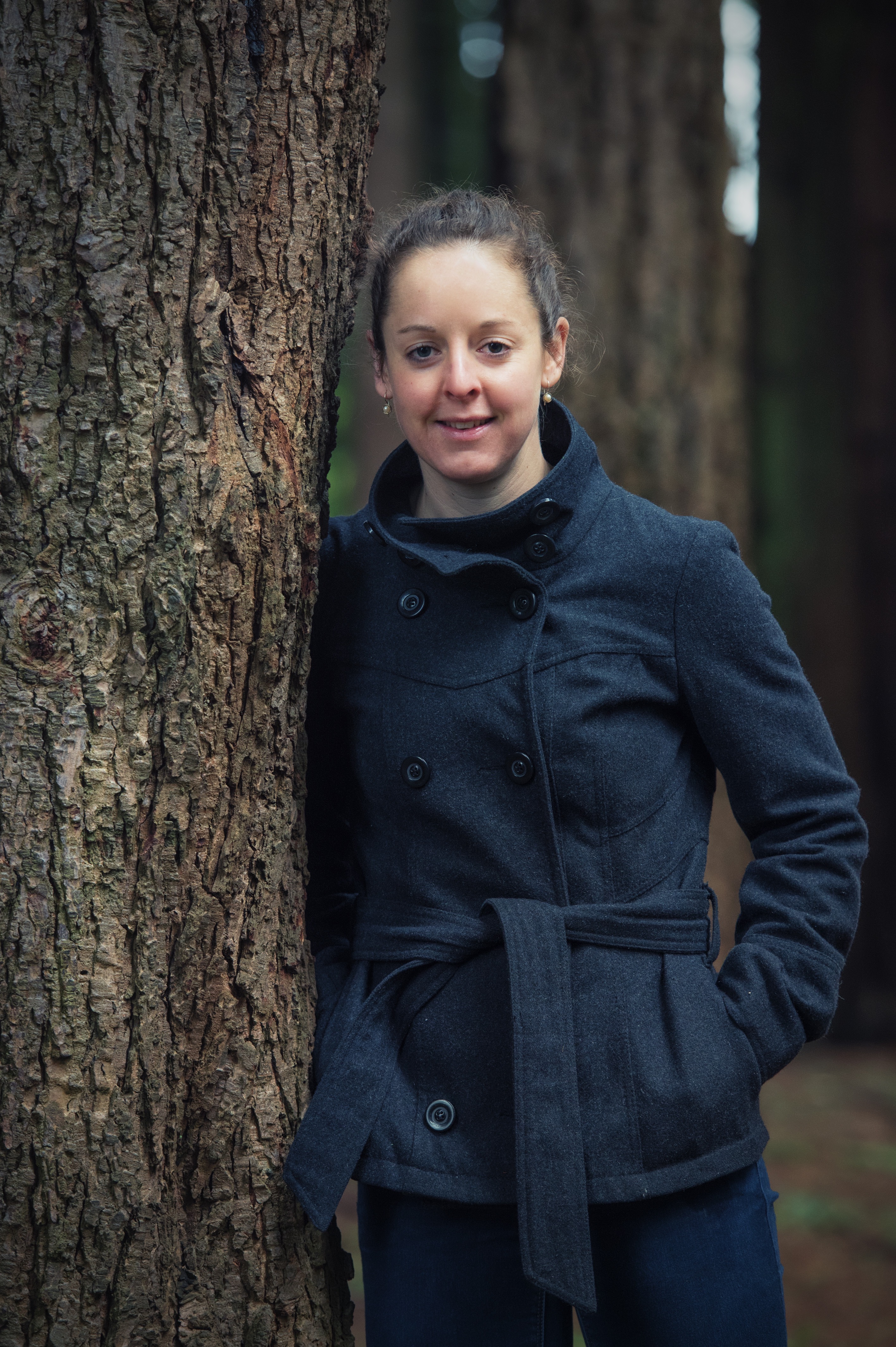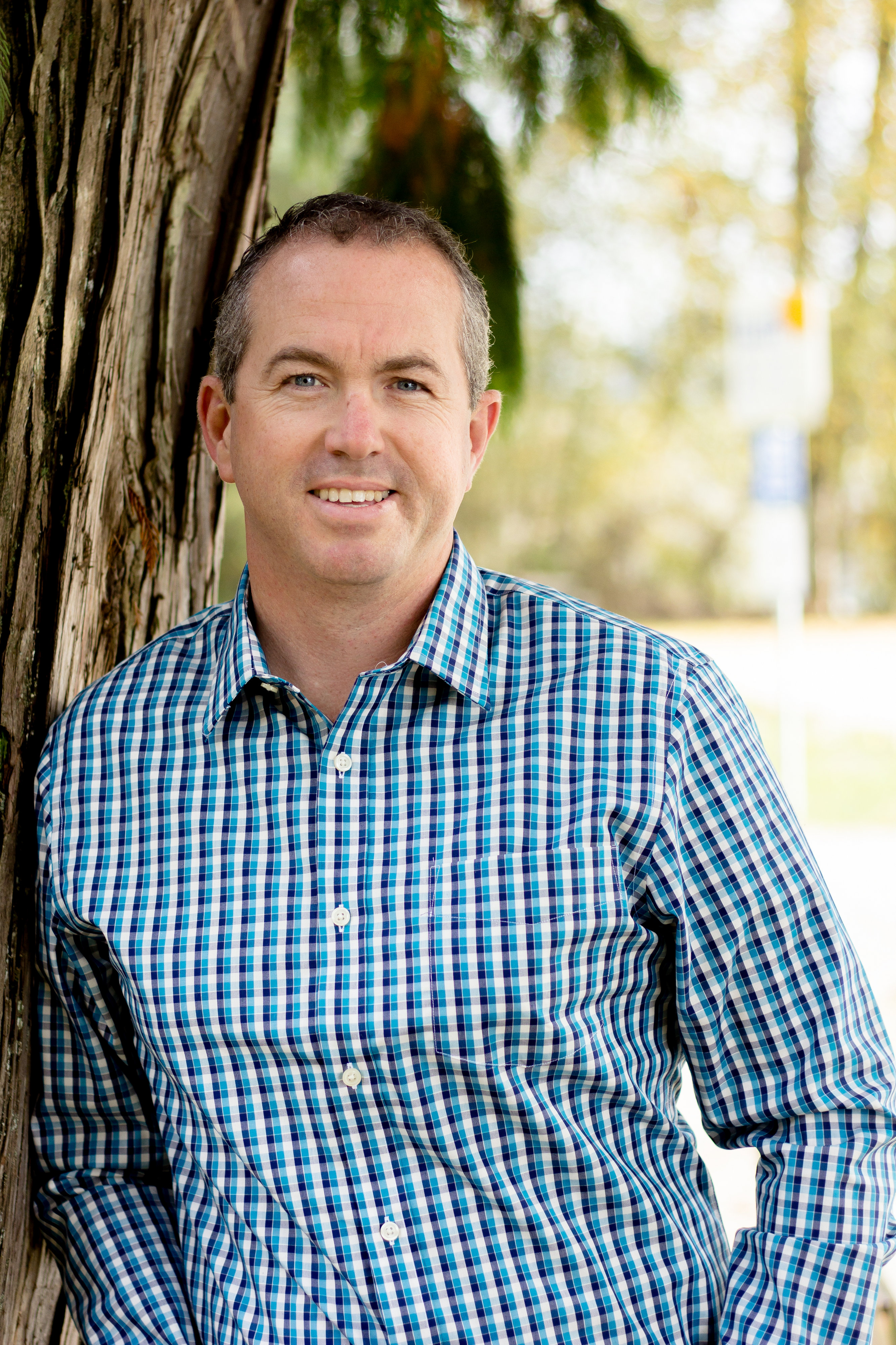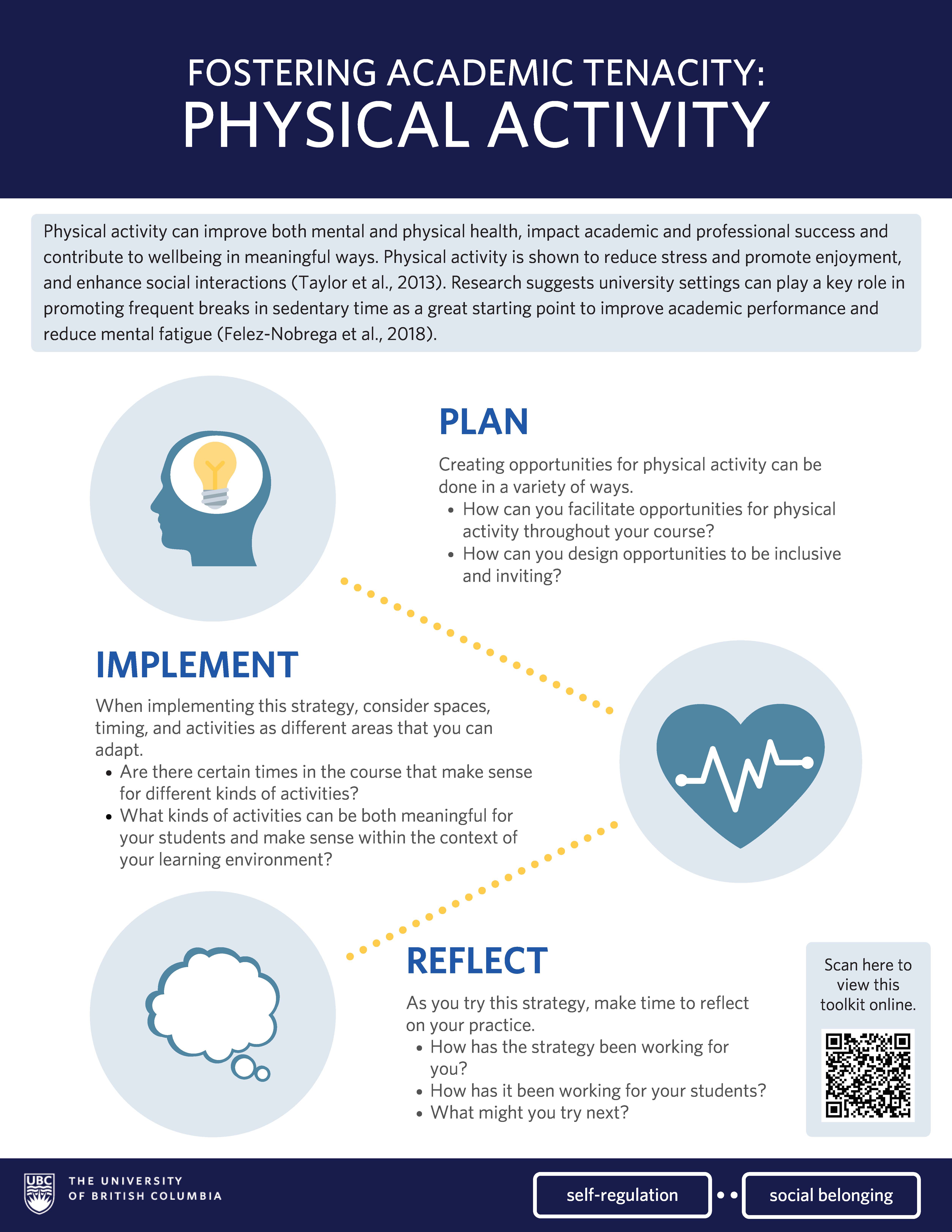Fostering Academic Tenacity: Physical Activity
Exercise has many benefits beyond just the physical; moving more can help promote positive mental and social wellbeing, improve learning, concentration, and memory, and can also increase creativity and productivity—helping UBC community members live, work and learn their best.
The best way to reduce time spent sitting is to commit to frequent and short movement breaks—but it can often be challenging to find the time and motivation to exercise, especially while learning online.
Help support student learning and wellbeing by bringing opportunities to move into your classrooms, lectures, or other learning environments with these helpful resources from various campus partners.
Physical Activity Resources for Learning Environments
UBC Recreation has compiled physical activity resources to share in classes.
Encourage your students to move more, and break up bouts of sedentary behaviour during your lectures by sharing these simple ways to stretch and move during class breaks.
Move U Crew Videos
UBC Recreation and the Move U Crew have teamed up to bring you easy-to-follow movement breaks.
Random Acts of Exercise
For an even more dynamic and interactive movement break, request a visit from the Move U Crew!
Move U Crew members are student“movement specialists” with experience in fitness, dance, stretching and a variety of other recreation specialties. They can tailor movement breaks to your learning environment, and
Small changes can add up to big impacts—moving more and sitting less can improve both mental and physical health, impact academic and professional success, and contribute to wellbeing in meaningful ways.
From live movement sessions to at-home workouts, to online challenges, UBC Recreation is offering ways to thrive from the comfort of your own space.
Promising Practices

Andrea Bundon teaches in Kinesiology and embeds opportunities for physical activity within her Health Promotion class. She introduced a system where students sign-up to lead Random Acts of Exercises for each other throughout the term at the start or midpoint of every class. She finds this helps with focusing the students’ attention and assists with ‘on-task’ performance (Active Living Research, 2013).
These opportunities for physical activity also bring a little fun to the lecture and encourage students to get to know their classmates. She also utilizes existing resources on campus, such as the Move U Crew, to lead movement breaks within the classroom. She encourages participation in the physical activity campaign, Move UBC, by allocating ‘participation marks’ and other incentives.

Steve McGinley teaches in the Health Outdoor and Physical Education (HOPE) program area in the Department of Curriculum and Pedagogy, Faculty of Education and in the School of Kinesiology. In his courses he introduces teachers to the BC Physical and Health Education (PHE) curriculum, content knowledge, pedagogical content knowledge, practical experiences, and professional responsibilities to be a successful school teacher.
The course expands teachers’ level of confidence and competence through the use of experiential education, by purposefully engaging the learners in direct experiences and focused reflection in order to increase knowledge, develop skills, clarify values, and develop one's capacity to support QPE in their school and local communities. The learners actively participate (physical activity) in experiential movement opportunities during the classes to support the delivery of physical activity movements throughout the day and QPE.
In his courses he engages with the learners and creates and sustains conditions for professional collaboration across education, sport, recreation and health. He is a firm believer that when we open ourselves up to listen, share and collaborate, best practices emerge.
Selected References and Measures
Active Living Research. (2013). Research brief: Building evidence to prevent childhood obesity and support active communities. Retrieved from https://activelivingresearch.org/sites/activelivingresearch.sdsc.edu/files/ALR_Brief_ActivityBreaks_Feb2013.pdf
Centers for Disease Control and Prevention. (2010). The association between school-based physical activity, including physical education, and academic performance. Atlanta, GA: U.S. Department of Health and Human Services. Retrieved from: https://www.cdc.gov/healthyyouth/health_and_academics/pdf/pa-pe_paper.pdf
Felez-Nobrega, M., Hillman, C. H., Dowd, K. P., Cirera, E., & Puig-Ribera. A. (2018). ActivPALTM determined sedentary behaviour, physical activity and academic achievement in college students. Journal of Sports Sciences, 36(20), 2311-2316, DOI: 10.1080/02640414.2018.1451212 .
Powell, K. E., Paluch, A. E., and Blair, S. N. (2011). Physical activity for health: What kind? How much? How intense? On top of what?. Public Health, 32(1), 349.
Taylor, W. C., King, K. E., Shegog, R., Paxton, R. J., Evans-Hudnall, G. L., Rempel, D. M., ... & Yancey, A. K. (2013). Booster Breaks in the workplace: participants’ perspectives on health-promoting work breaks. Health Education Research, 28(3), 414-425.
Go Further
Learn more about how to embed physical activity into your learning environments with this Physical Activity Reflection and Planning Tool
